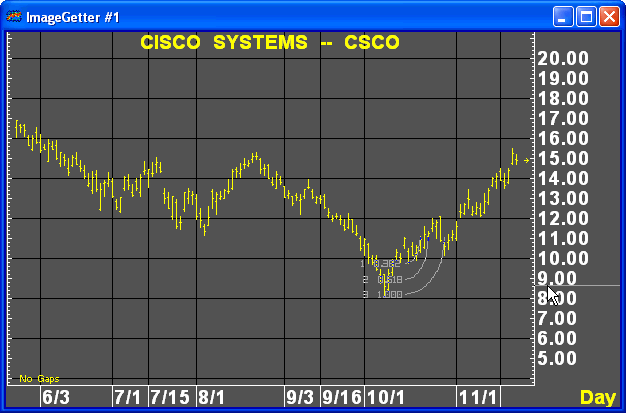|
|
To draw TD Retracement Arc, click ![]() , or choose TD Arc
from the Trend Lines Menu.
, or choose TD Arc
from the Trend Lines Menu.
TD Retracement Arc displays graphically support and resistance levels which are defined by incorporating both price and time to establish retracement levels.

The TD Arc study is an Aspen trendline draw function. Selecting TD Arc from the Trendline Functions menu prepares the trendline cursor to draw the TD Arc retracement. Clicking on a bar in the chart defines an anchor point, or reference bar, for the retracement. The retracement lines can be modified or deleted in the same way as other Aspen trendlines, and their respective retracement levels are available in the cursor window.
A click is assumed to refer to the high, low, open, or close of a displayed bar; the software locates the nearest such point and uses it as the exact reference point. To be more precise, the software first finds the horizontally nearest bar column, then chooses the vertically closest reference point within that column. If multiple data items are on display, the one with the vertically closest reference point is chosen. (Formula data items are not eligible to be chosen.) Only high and low points are eligible.
Parameters
The TD Retracement Arc study also has Date and Time parameters, which identify the date and time of the reference bar. As with any trend line drawing function, the process of drawing a TD Retracement Arc study involves selecting a reference bar, and selection specifies the Date and Time parameters.
TD Retracement Arc draws elliptical trendline curves. The anchor point and magnet price are determined in the same way as for Relative Retracement. Also, the software calculates the distance (number of bars) from the anchor bar to the high or low bar whose close determines the magnet price. Then, the trendline curve for fraction F is a segment of a quarter ellipse starting horizontally at the anchor point, and ending vertically at price.
The trendline curve terminates early if it touches a price bar before reaching the end point.